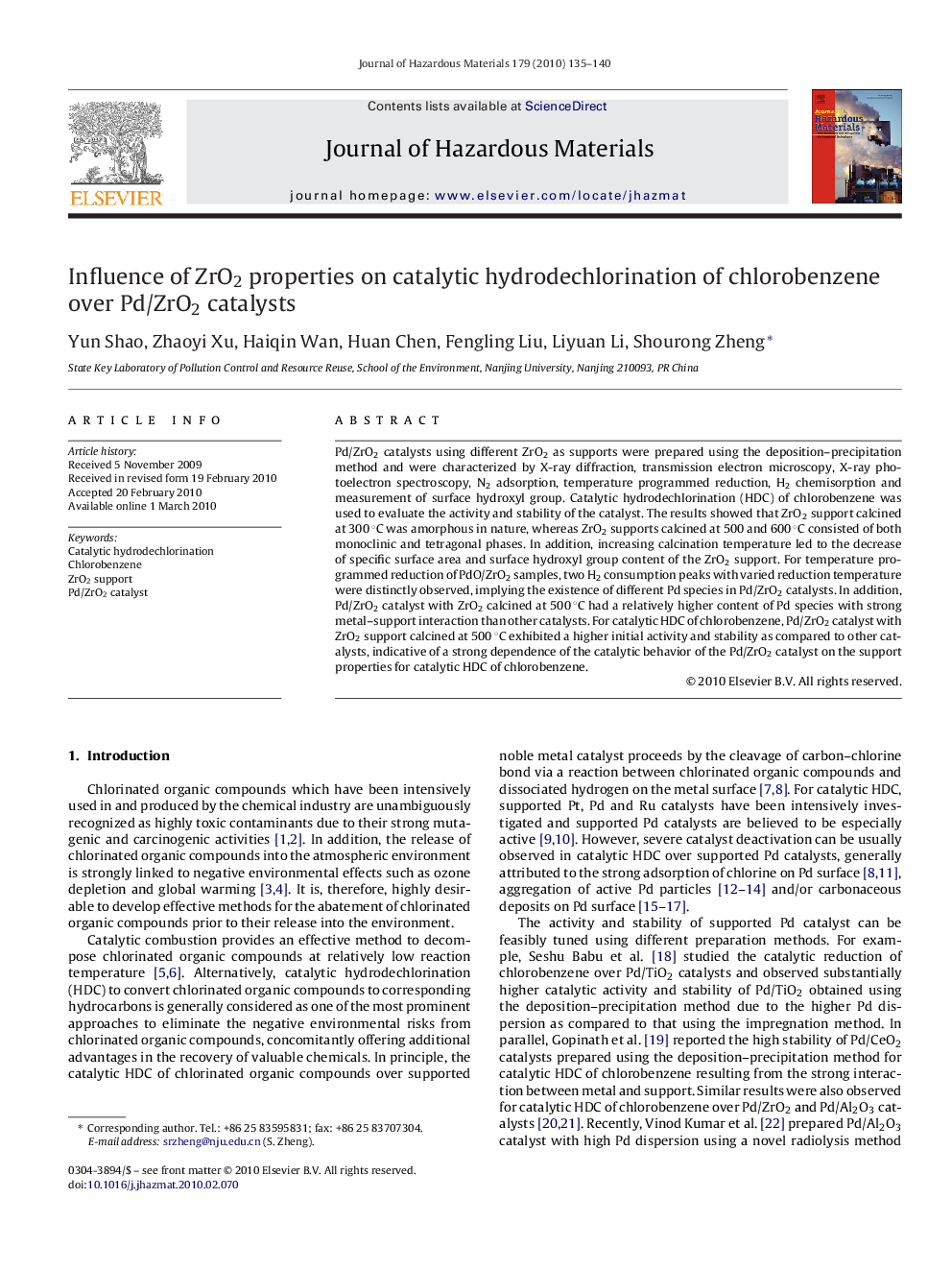| Article ID | Journal | Published Year | Pages | File Type |
|---|---|---|---|---|
| 580345 | Journal of Hazardous Materials | 2010 | 6 Pages |
Abstract
Pd/ZrO2 catalysts using different ZrO2 as supports were prepared using the deposition-precipitation method and were characterized by X-ray diffraction, transmission electron microscopy, X-ray photoelectron spectroscopy, N2 adsorption, temperature programmed reduction, H2 chemisorption and measurement of surface hydroxyl group. Catalytic hydrodechlorination (HDC) of chlorobenzene was used to evaluate the activity and stability of the catalyst. The results showed that ZrO2 support calcined at 300 °C was amorphous in nature, whereas ZrO2 supports calcined at 500 and 600 °C consisted of both monoclinic and tetragonal phases. In addition, increasing calcination temperature led to the decrease of specific surface area and surface hydroxyl group content of the ZrO2 support. For temperature programmed reduction of PdO/ZrO2 samples, two H2 consumption peaks with varied reduction temperature were distinctly observed, implying the existence of different Pd species in Pd/ZrO2 catalysts. In addition, Pd/ZrO2 catalyst with ZrO2 calcined at 500 °C had a relatively higher content of Pd species with strong metal-support interaction than other catalysts. For catalytic HDC of chlorobenzene, Pd/ZrO2 catalyst with ZrO2 support calcined at 500 °C exhibited a higher initial activity and stability as compared to other catalysts, indicative of a strong dependence of the catalytic behavior of the Pd/ZrO2 catalyst on the support properties for catalytic HDC of chlorobenzene.
Related Topics
Physical Sciences and Engineering
Chemical Engineering
Chemical Health and Safety
Authors
Yun Shao, Zhaoyi Xu, Haiqin Wan, Huan Chen, Fengling Liu, Liyuan Li, Shourong Zheng,
